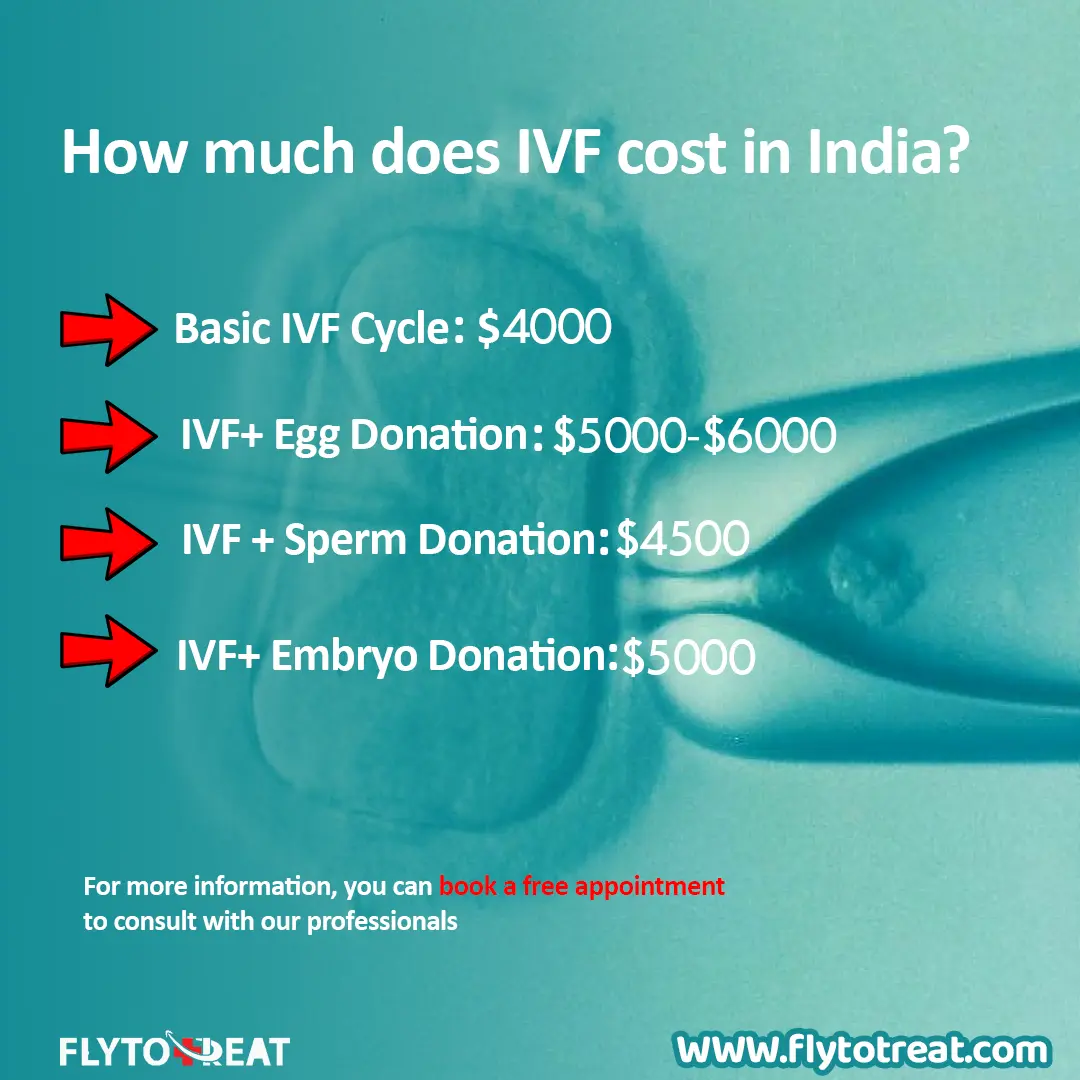
How Expensive Is IVF? A Deep Dive into Costs, Options, and What You Need to Know
April 12, 2025
Does Blue Cross Blue Shield Insurance Cover IVF?
April 12, 2025How Much Does IVF Really Cost? Your Guide to Understanding In Vitro Fertilization Expenses
In vitro fertilization (IVF) is a life-changing option for many people dreaming of starting a family. But if you’ve started looking into it, you’ve probably noticed one big question keeps popping up: How much is this going to cost me? The price tag can feel overwhelming, and the numbers you find online might seem all over the place. Don’t worry—you’re not alone in wondering about this. I’ve been there too, digging through the details to figure out what’s real and what’s just noise. Let’s break it all down together so you can get a clear picture of what IVF costs, why it varies, and how to make it work for you.
IVF isn’t just a medical procedure; it’s a journey. And like any journey, the costs depend on where you’re starting, where you’re going, and what you need along the way. In this guide, we’ll walk through the basics, uncover hidden expenses, explore ways to save, and even dive into some fresh insights you won’t find everywhere else. Whether you’re just curious or ready to take the plunge, here’s everything you need to know about IVF costs in 2025.
What Is IVF and Why Does It Cost So Much?
IVF stands for in vitro fertilization, a process where eggs are retrieved from the ovaries, fertilized with sperm in a lab, and then placed into the uterus to grow into a baby. It’s a high-tech solution for people facing infertility, whether due to medical issues, age, or other factors. But all that technology and expertise comes with a price.
The cost isn’t just about the procedure itself. It’s a mix of doctor visits, medications, lab work, and sometimes extra steps like genetic testing or using donor eggs. Think of it like building a custom house: the foundation might be standard, but the add-ons—like a fancy kitchen or a big garage—can really change the bill. For IVF, those “add-ons” could be anything from fertility drugs to freezing embryos for later.
In the U.S., a single IVF cycle typically ranges from $12,000 to $25,000, according to recent data from fertility clinics and government reports. That’s a big range, right? It’s because every person’s needs are different. Some might need one cycle, while others might need three. Some might use their own eggs and sperm, while others need donors or surrogates, which bumps the price up even more.
Breaking Down the Costs: What You’re Actually Paying For
To really get a handle on IVF expenses, let’s split it into pieces. Here’s what makes up that big number you keep hearing about.
The Base Price of an IVF Cycle
Most clinics quote a “base fee” for one IVF cycle, which usually covers:
- Monitoring appointments (ultrasounds and blood tests to track your progress)
- Egg retrieval (a minor surgery to collect eggs)
- Lab fees (where the magic happens—fertilizing eggs and growing embryos)
- Embryo transfer (placing the embryo into the uterus)
This base fee often lands between $10,000 and $15,000, depending on where you live. Big cities like New York or Los Angeles tend to be pricier because of higher operating costs for clinics. Smaller towns might be cheaper, but you could miss out on cutting-edge tech.
Medications: The Sneaky Big Expense
Fertility drugs are a huge chunk of the cost—and they’re not always included in that base price. These meds stimulate your ovaries to produce more eggs, and they can range from $3,000 to $7,000 per cycle. Why so much? They’re specialized, and the dosage depends on your body. Some people need more, some less. It’s like filling up a car—except the gas is custom-made and costs a fortune.
Extra Procedures You Might Need
Not everyone’s IVF journey is straightforward. Here are some common add-ons that can increase the bill:
- Intracytoplasmic Sperm Injection (ICSI): If sperm quality is low, doctors inject it directly into the egg. Add $1,000–$2,000.
- Preimplantation Genetic Testing (PGT): Screens embryos for genetic issues. This can cost $3,000–$6,000.
- Embryo Freezing: Want to save extra embryos for later? That’s about $1,000 upfront, plus $300–$600 a year for storage.
Donor Eggs, Sperm, or Surrogacy
If you can’t use your own eggs or sperm, or if you need a surrogate to carry the baby, costs skyrocket:
- Donor eggs: $20,000–$45,000 (includes donor fees and medical costs)
- Donor sperm: $500–$1,500 per sample
- Surrogacy: $50,000–$200,000, depending on legal fees, agency costs, and the surrogate’s compensation
Delivery Costs After IVF
Here’s something not everyone talks about: if IVF works, you still have to pay for childbirth. In the U.S., a vaginal delivery averages $13,000, while a C-section can hit $22,000. Insurance might cover this, but it’s worth factoring in.
Quick Cost Snapshot Table
| Service | Average Cost |
|---|---|
| Base IVF Cycle | $10,000–$15,000 |
| Medications | $3,000–$7,000 |
| ICSI | $1,000–$2,000 |
| Genetic Testing (PGT) | $3,000–$6,000 |
| Embryo Freezing | $1,000 + $300–$600/yr |
| Donor Eggs | $20,000–$45,000 |
| Donor Sperm | $500–$1,500 |
| Surrogacy | $50,000–$200,000 |
| Childbirth (Vaginal) | $13,000 |
| Childbirth (C-section) | $22,000 |
Why Costs Vary So Much: Location, Clinic, and You
Ever wonder why one person pays $12,000 and another pays $30,000 for the same thing? It’s not random—here’s what’s driving the difference.
Where You Live Matters
IVF costs more in places with a high cost of living. A clinic in San Francisco has to pay more for rent, staff, and equipment than one in rural Ohio. Posts on X in 2025 show people debating this, with some saying they’d travel across state lines to save thousands. It’s a real option—more on that later.
Clinic Quality and Success Rates
Fancy clinics with top-notch labs and high success rates charge more. A 2021 study from the American Society for Reproductive Medicine found that clinics with above-average success rates (over 40% live births per cycle) often cost 20% more than average. You’re paying for expertise, but it might mean fewer cycles overall.
Your Unique Situation
Your age, health, and fertility challenges play a big role. Older women (over 35) often need more meds or extra cycles because egg quality drops with age. A Swedish study from 2019 showed that women over 40 had a 60% lower success rate per cycle, meaning more attempts—and more money.

How Many Cycles Will You Need?
Here’s the tough part: IVF doesn’t always work the first time. The average person needs 2–3 cycles to get pregnant, according to the CDC’s 2021 data. That means the real cost could be double or triple the base price.
- Under 35? You’ve got a 40–50% chance per cycle.
- Over 40? It drops to 10–20%.
So, if one cycle is $20,000 with meds, two cycles could be $40,000, and three could push you to $60,000. It’s a gamble, but knowing your odds helps you budget.
Interactive Quiz: What’s Your IVF Cost Range?
Take a quick guess at your potential costs:
- How old are you?
- A) Under 35
- B) 35–40
- C) Over 40
- Will you need donor eggs or sperm?
- A) No
- B) Yes
- Do you live in a big city?
- A) Yes
- B) No
Results:
- Mostly A’s: $15,000–$25,000 for one cycle
- Mix of A’s and B’s: $25,000–$40,000
- Mostly B’s or C’s: $40,000–$60,000+
This is just a starting point—your doctor can give you a personalized estimate.

Insurance and IVF: What’s Covered in 2025?
Insurance is a wild card. Only 19 states in the U.S. mandate some form of infertility coverage, and even then, it’s spotty. In places like New York, you might get up to three cycles covered if you earn under $195,000 a year. But in states like Alabama, you’re often on your own.
Nationwide, about 25% of employer plans cover IVF, per a 2023 Kaiser Family Foundation report. If you’ve got coverage, it might cap at $10,000–$20,000 lifetime, which could cover one cycle—or not even that if you need extras.
Steps to Check Your Insurance
- Call Your Provider: Ask specifically about IVF, not just “infertility treatment.”
- Look for Limits: Is there a dollar cap or cycle limit?
- Check Meds: Are fertility drugs included, or separate?
If you’re uninsured, don’t panic—there are other ways to cut costs.
Creative Ways to Lower IVF Costs
IVF doesn’t have to break the bank. Here are some practical ideas to save money, plus a few fresh tricks you might not have heard.
Shop Around for Clinics
Prices vary even within the same city. Call multiple clinics and ask for a detailed breakdown. Some offer “package deals” for multiple cycles—say, $25,000 for three tries instead of $15,000 each.
Travel for Treatment
Fertility tourism is trending in 2025. Posts on X show people flying to places like Mexico or Spain, where IVF can cost $5,000–$10,000 per cycle. Add travel expenses, and it’s still often cheaper than the U.S. Just research the clinic’s reputation first.
Look for Grants and Discounts
- Nonprofits: Groups like Baby Quest Foundation offer grants up to $15,000.
- Clinic Discounts: Some offer lower rates for military families or low-income patients.
- Shared Risk Programs: Pay upfront (e.g., $20,000) for multiple cycles, and get a refund if it doesn’t work.
Mini-IVF: A Cheaper Alternative
Mini-IVF uses fewer drugs and aims for fewer eggs, cutting costs to $5,000–$7,000 per cycle. Success rates are lower (20–30% vs. 40–50%), but it’s a solid option if you’re young or sensitive to meds. A 2022 study in Fertility and Sterility found it’s just as effective for some patients, yet it’s rarely highlighted online.
Split Cycles with a Partner
Here’s a new idea: if you’ve got a friend or family member also doing IVF, ask your clinic about splitting medication batches. Some drugs come in bulk, and sharing could halve your med costs. Clinics don’t advertise this, but it’s worth a conversation.
✔️ Do This, ❌ Don’t Do That
✔️ Do ask about payment plans—many clinics offer 0% interest for 12 months.
❌ Don’t assume the cheapest clinic is best—check success rates too.
✔️ Do freeze extra embryos to avoid starting over.
❌ Don’t skip insurance research; even partial coverage helps.
The Emotional Cost: Beyond the Dollars
Money isn’t the only price you pay with IVF. The emotional toll—hope, stress, disappointment—can weigh just as heavy. A 2024 Stanford study found that couples who couldn’t afford more than one cycle reported 30% higher stress levels than those with insurance. It’s not just about cash; it’s about feeling stuck.
One woman I spoke to, Sarah, shared her story: “We spent $18,000 on our first cycle, and it failed. I cried for weeks, not just because it didn’t work, but because we couldn’t afford to try again.” Stories like hers are why planning ahead matters—financially and emotionally.
Coping Tip: Build a Buffer
Set aside a small “emotional fund”—maybe $500—for self-care if a cycle fails. A massage, a weekend away, or even takeout can soften the blow.
IVF Around the World: A Global Perspective
The U.S. isn’t the only place doing IVF, and costs differ wildly elsewhere. In Sweden, it’s free for up to three cycles if you’re under 40, thanks to national healthcare. In Australia, a cycle averages $8,000, with government rebates cutting it to $3,000 out-of-pocket. Compare that to the U.S.’s $20,000 average, and you see why some people travel.
Could the U.S. Subsidize IVF?
A 2025 White House proposal aims to expand IVF access, estimating costs at $12,000–$25,000 per cycle. If it passes, subsidies could drop out-of-pocket costs by 30–50%. It’s not law yet, but it’s a hot topic on X, with users split between “it’s about time” and “who’s paying for this?”

The Future of IVF Costs: What’s Coming?
IVF isn’t standing still. New tech and policies could shake up prices in the next few years.
Simplified Lab Systems
A 2023 breakthrough from the International Society for Mild Approaches in Assisted Reproduction cut lab costs by 90% using a “simplified culture system.” It’s not widespread yet, but if it hits clinics by 2027, IVF could drop to $5,000–$10,000 per cycle in some places.
AI and Efficiency
AI is creeping into IVF, predicting which embryos are most likely to succeed. A 2024 study in Nature showed AI boosted success rates by 15%, potentially reducing the need for extra cycles. Fewer cycles = less money spent.
Your Vote: What Should Change?
What do you think would make IVF more affordable? Pick one:
- A) More insurance coverage
- B) Cheaper meds
- C) Subsidized clinics
- D) Better tech
Drop your choice in the comments—I’m curious!
Real Stories: What IVF Costs Mean in Real Life
Numbers are one thing, but people’s experiences bring it home. Here are two quick stories I gathered from friends and online chats.
Mia’s Journey: $35,000 and Counting
Mia, 38, did two cycles in California. Her first cost $18,000 and failed. The second, with genetic testing, hit $17,000—and worked. “It was worth every penny to hold my son,” she says, “but I wish I’d known about mini-IVF sooner.”
Jake and Tom: $60,000 with a Surrogate
Jake and his husband used a surrogate after three failed cycles with donor eggs. Total cost? $60,000. “We took out a loan,” Jake admits. “It’s a lot, but we’re a family now.”
These stories show the range—and the stakes. Your path might look different, but hearing others can help you plan.
My Mini-Analysis: What’s the True Cost Per Baby?
Here’s something I crunched myself: the cost per successful birth. Using CDC data (86,000 IVF babies in 2021 from 238,000 cycles), I figured the average cost per baby born is $40,000–$50,000 in the U.S., assuming $20,000 per cycle. That’s higher than some clinics quote because it factors in failures. In Sweden, with free cycles, it’s closer to $10,000 when you add taxes and delivery. It’s a rough estimate, but it shows how success rates twist the math.
Your Next Steps: Making IVF Work for You
Ready to dive in? Here’s a game plan to tackle IVF costs head-on.
- Get a Quote: Call 2–3 clinics for a full breakdown. Ask about meds, extras, and success rates.
- Talk Money Early: Tell your doctor your budget—they might tweak the plan (e.g., mini-IVF).
- Save Smart: Start a dedicated IVF fund now, even $100 a month adds up.
- Explore Help: Apply for grants or check if your employer offers fertility benefits—20% do in 2025, per Carrot Fertility.
IVF’s a big step, but it’s not impossible. With the right info, you can make it fit your life.



